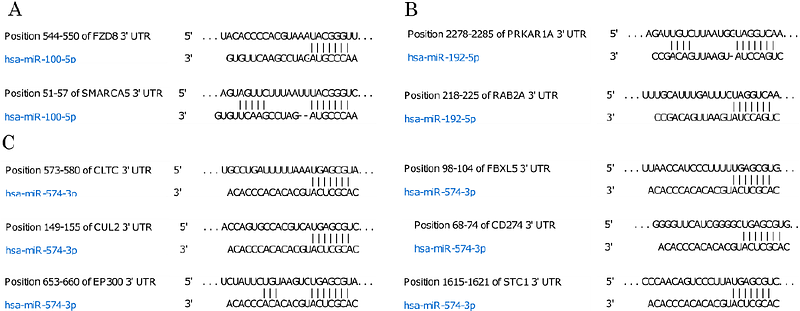Effects of human microRNAs 100-5p, 192-5p, and 574-3p on proliferation, migration, and gene expression of human immortalized nasopharyngeal cells

Effects of human microRNAs 100-5p, 192-5p, and 574-3p on proliferation, migration, and gene expression of human immortalized nasopharyngeal cells
Muller Coan, B. G.; Elgui de Oliveira, D.
AbstractCancers are malignant neoplastic diseases with complex etiopathogenesis. Transformed cells acquire diverse biological properties that induce alterations in migration, invasion, and cell survival rates, favoring metastasis formation. This process is influenced by many factors, including miRNAs. MiRNAs are molecules that canonically prevent mRNA translation, influencing many cellular processes, carcinogenesis, and the progression of cancers. Nasopharyngeal carcinomas (NPCs) are aggressive cancers with high invasion rates to adjacent tissues, such as the base of the cranium, facial sinuses, and orbits, in addition to a high metastatic rate to local lymph nodes. The nonkeratinizing NPC is the most common histological form (over 95% of cases) and is highly related to Epstein-Barr virus (EBV) infection, notably when undifferentiated. In a previous study, we observed that immortalized nasopharyngeal cells NP69SV40T transfected to express the EBV Latent Membrane Protein 1 (LMP1) from the M81 strain hyperregulate human microRNAs miR-100-5p, miR-192-5p, and miR-574-3p, compared to NP69SV40T cells transfected with LMP1 from the EBV strain B95.8A. In this study, we aimed to assess the putative effects of each of the identified microRNAs on the viability, migration, and proliferation of NP69SV40T cells cultivated in vitro. Therefore, target prediction and pathway enrichment analysis were performed to infer which pathways could be modulated by each miRNA, followed by expression analysis of selected predicted target genes. Additionally, NP69SV40T cells were transfected with miR-100-5p, miR-192-5p, or miR-574-3p mimics to analyze cell behavior. After their transfection with the miR-192-5p mimic, we observed a 40% decrease in RAB2A transcript levels and a 43% reduction in cell migration. During the pathway enrichment analysis, miR-192-5p showed predicted involvement in pathways such as MAPK, GPCRs, TKR, and TGF-{beta}. NP69SV40T cells transfected with miR-100-5p or miR-574-3p reduced transcriptional levels of their targets FZD8 and STC1, respectively. However, in the performed cellular assays, they did not alter cell behavior. The results demonstrate that miR-192-5p acts as a tumor suppressor, elucidating part of its function in nasopharyngeal cells. This highlights its importance in the NPC context and the necessity of further studies on this miRNA.